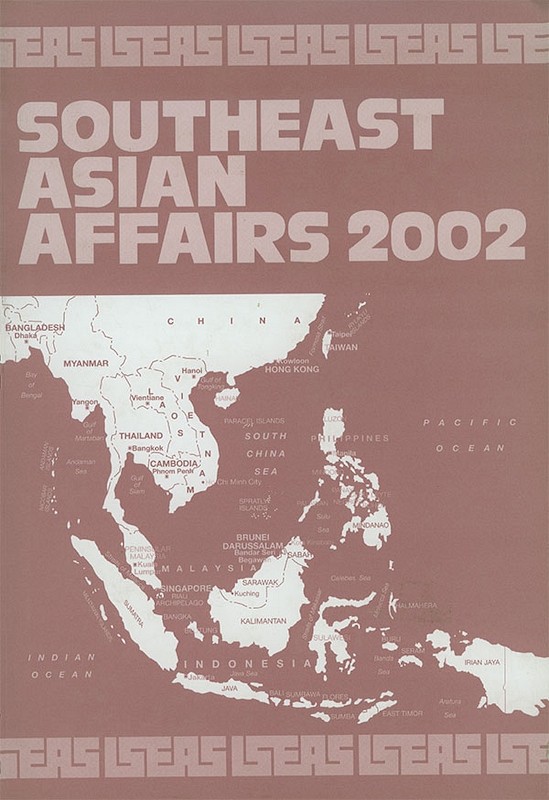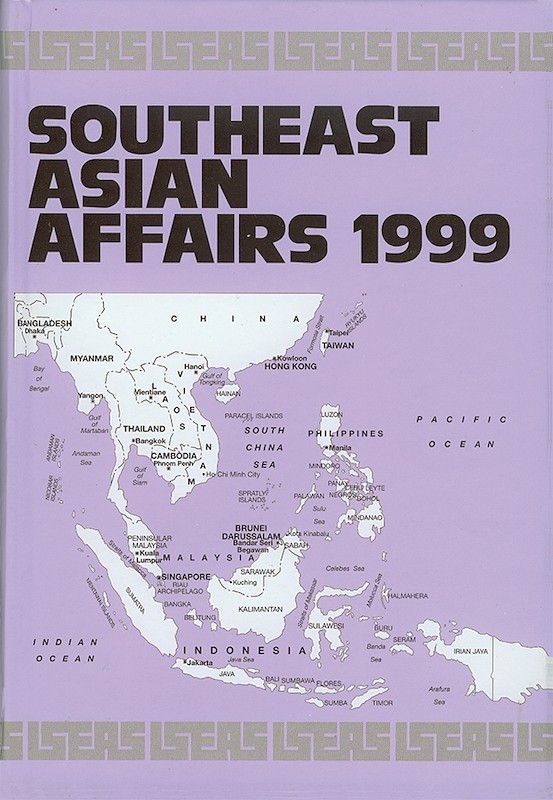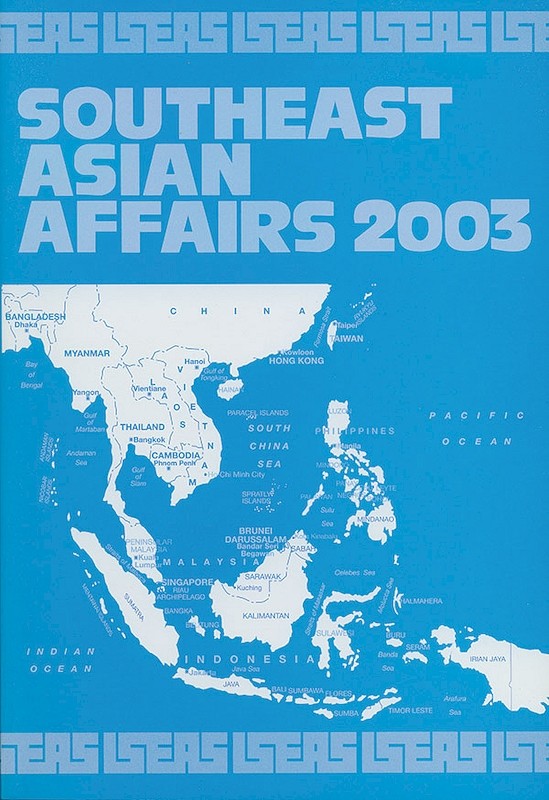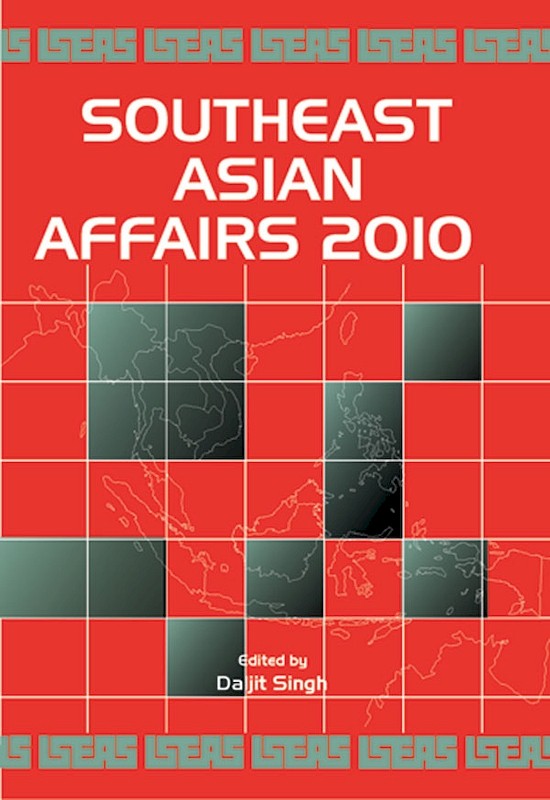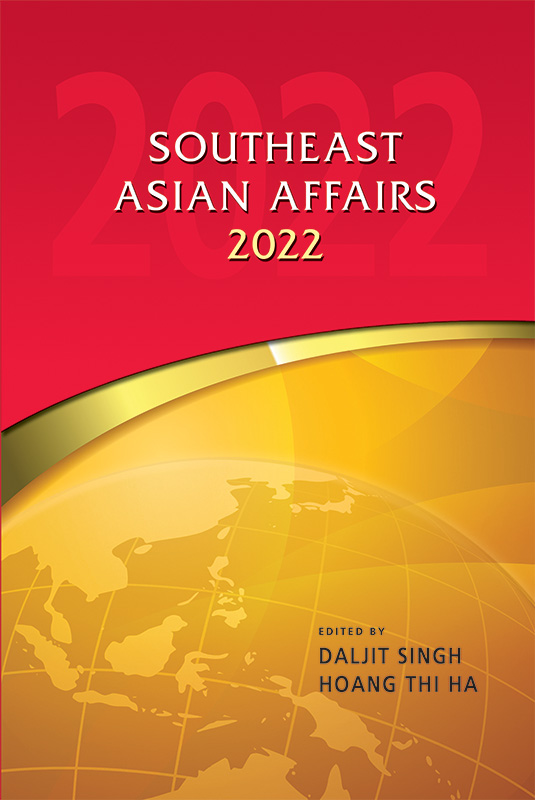Southeast Asian Affairs 2001
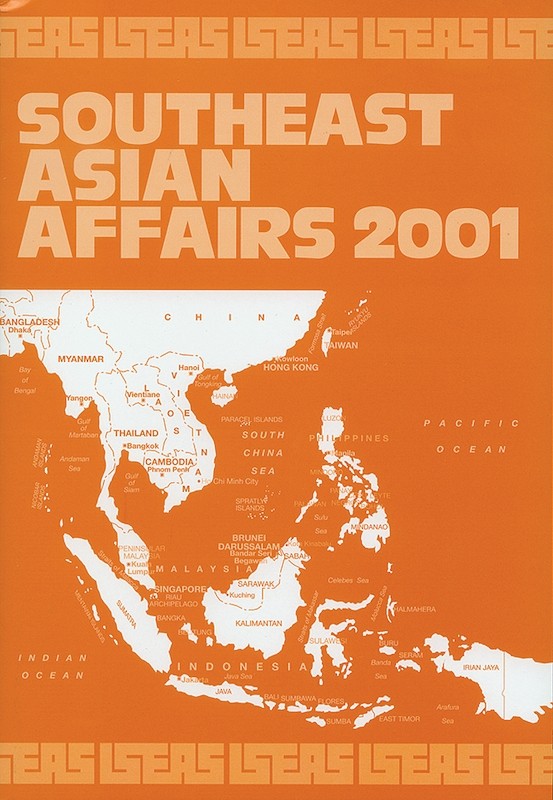
Date of publication:
2001
Number of pages:
386
Code:
SEAA1
About the publication
Southeast Asian Affairs, of which there are now twenty-eight in the series, is an annual review of significant developments and trends in the region. Though the emphasis is on ASEAN countries, developments in the broader Asia-Pacific region are not ignored. Readable and easily understood analyses are offered of major political, economic, social, and strategic developments within Southeast Asia.
The contributions can be divided into two broad categories. There are those which provide an analysis of major developments during 2000 in individual Southeast Asian countries and in the region generally. Then there are the theme articles of a more specialized nature which deal with topical problems of concern.
This volume contains twenty-three articles, dealing with such major themes as international conflict and co-operation, political stability, and economic growth and development.
The contributions can be divided into two broad categories. There are those which provide an analysis of major developments during 2000 in individual Southeast Asian countries and in the region generally. Then there are the theme articles of a more specialized nature which deal with topical problems of concern.
This volume contains twenty-three articles, dealing with such major themes as international conflict and co-operation, political stability, and economic growth and development.
Contents
-
Southeast Asian Affairs 2001
[Whole Publication] -
Preliminary pages
- THE REGION
-
1. Southeast Asia in 2000: Many Roads, No Destination?, by Daljit Singh, author see abstractThis opening chapter analyses developments in Southeast Asian, East Asian, and Asia-Pacific regionalism during the year 2000. It then goes on to discuss the postures of the great powers, especially the United States and China, towards East and Southeast Asia from the vantage point of the year 2000.
-
2. Southeast Asia's Economies: Corporate Sector Concerns Return to the Fore, by Nick J Freeman, author see abstractDuring the first half of 2000, economists began to talk of a "V-shaped" recovery for the region in the propitious Year of the Dragon. In big picture terms at least, Southeast Asia appeared to be much improved, and began to show signs of some return to normalcy. However, jitters in the currency and equity markets suggested that all was not well, and doubts began to grow during the latter part of 2000 about the sustainability of the economic recovery process. This article sheds light on the factors behind these apparently contradictory signals, and their implications for the ongoing recovery process in the region.
-
3. Australia and Asia: The Years of Living Aimlessly, by Mark Beeson, author see abstractMark Beeson argues that Australian attitudes to Asia have undergone a marked change -- for the worse -- since the election of the Howard government in the mid-1990s.
-
4. Australia and Asia: Yesterday, Today and Tomorrow, by Cavan Hogue, author see abstractCavan Hogue, viewing Australia-Asia relations in historical perspective, argues that basically there has been a bipartisan and evolving Australian policy towards Asia, and that the conflict between Australias history and geography is slowly being determined in favour of Asia.
-
5. Environmental Challenges, by Lorraine Elliott, author see abstractThe article analyses the environmental consequences of the political economy of Southeast Asia, their social and economic costs, regional policy responses, and the challenges ahead.
-
6. East Timor's Future: Southeast Asian or South Pacific?, by Hal Hill, author see abstractAlthough it is expected that East Timor will join ASEAN in some capacity in the future, and thus identify as part of the ASEAN region, will it be "Southeast Asian" or "South Pacific" in its development patterns? East Timor faces difficult developmental choices. Prospects for self-sustainability are limited and this is compounded by the fact that East Timor must literally recreate every aspect of governance.
- BRUNEI DARUSSALAM
-
7. Negara Brunei Darussalam: Economic Gloom and the APEC Summit, by A V M Horton, author see abstractThe author reviews developments during 2000, focusing on the economy, the royal family, the APEC summit, and foreign policy.
- CAMBODIA
-
8. Cambodia: Democracy or Dictatorship?, by Caroline Hughes, author see abstractIn the year 2000 Cambodia was relatively stable, albeit at a cost to plurality. There were no signs that a non-partisan bureaucracy would emerge that might facilitate some independence in the civil service. Formal democratic procedures barely mask the reality of Hun Sens consolidation of power into an effective one-party state. However, there are signs that this style of rule has not necessarily gained the consent of the whole population and may be challenged in the future.
-
9. Dealing with Crimes Against Humanity: Progress or Illusion?, by Stephen R Heder, author see abstractAfter the disintegration of the Khmer Rouge, and the defection of its remnants into the fold of the ruling party, Hun Sen has opted for a policy of forgetting the crimes of the Khmer Rouge past. Under considerable pressure from the United Nations, Hun Sen has at times appeared to consider trials for the Khmer Rouge leaders. However, many fear that this is illusory.
- INDONESIA
-
10. Indonesia: The Trials of President Wahid, by Arief Budiman , author see abstractThe year 2000 was a trial year for Indonesian President Abdurrahman Wahid. He failed to make headway on a host of important issues confronting Indonesian society and his presidency had become embattled by the end of the year, raising serious doubts about his ability to govern effectively even if, against all odds, his presidency can survive. However, in reviewing Wahids administration in 2000, its greatest achievement has been to maintain democracy, even if fragile, to engage in peaceful dialogue with independence leaders in Aceh and Irian Jaya; and to protect minorities such as the Indonesian Chinese.
-
11. Indonesia: Violence and Reform Beyond Jakarta, by Michael S Malley, author see abstractAlthough fears of a contagion effect across the archipelago did not materialize, the conflict against separatist movements in Aceh and Irian Jaya grew more intense during 2000, as did the communal conflict in Maluku. Elsewhere, provinces and districts continued to demand greater regional autonomy. The author examines the Indonesian Government's approach to separatist and communal conflicts as well as the new regional policy.
- LAOS
-
12. Laos: Signs of Unrest, by Bertil Lintner, author see abstractLaos continued to suffer from the effects of the regional economic crisis, and the political and economic system remained stagnant as much needed reforms have been slow in coming. There were signs of domestic unrest as a series of bomb blasts rocked the country. Although the perpetrators cannot be easily identified, the Government of Laos put the blame on dissidents living abroad and operating out of Thailand. However, none of this seriously threatens the ruling elite and change is only likely to come from within the government, if at all.
- MALAYSIA
-
13. Malaysia: UMNO's Search for Relevance, by John Funston, author see abstractDuring 2000, it became clear that the ruling Barisan Nasional (National Front), in particular its main component party, UMNO, continued to face a very serious challenge to its constituency. In the late 1999 general election, possibly only 50 per cent or less of Malay voters had voted for UMNO. Dr Mahathir sought to place the blame on internal and external enemies determined to undermine Malaysia.
-
14. The Unravelling of a "Malay Consensus", by Maznah Mohamad, author see abstractThe formation of the Barisan Alternatif (BA) alliance of four parties has greatly strengthened the opposition movement and taken away much of the government's support from the Malay community. If this trend continues, UMNO may have little choice but to reach out to the non-Malay constituency by bringing Malay political hegemony to an end. It is also possible that the New Economic Policy (NEP) will generate a Malay middle class which does not feel beholden to the state and UMNO.
- MYANMAR
-
15. Myanmar: Beyond the Reach of International Relief?, by Bruce Matthews, author see abstractProfessor Matthews provides a sensitive review of the realities in this sad country and developments during 2000. The iron grip that the military government has on the country belies an underlying fragility, especially in the face of any sudden or unexpected change.
- THE PHILIPPINES
-
16. The Philippines: Trauma of a Failed Presidency, by Alexander R Magno, author see abstractThe writer looks at the leadership of President Joseph Estrada and the events leading up to his impeachment. Great damage was caused to the Philippine economy, but in a perverse way, the Estrada presidency has also alerted Filipinos to the imperfections of their political culture.
-
17. Muslim Mindanao: Four Years After the Peace Agreement, by R J May, author see abstractIn September 1996, the Philippine Government and the Moro National Liberation Front (MNLF) signed an agreement that many hoped would bring centuries of conflict to an end. However, splinter movements within the Moro Bangsa (Moro Nation) emerged that challenged the deal struck by the MNLF, including more hardline groups such as the MILF and the Abu Sayyaf. The Abu Sayyaf, a poorly organized band of insurgents and bandits, were able to put the government under considerable pressure by abducting hostages. As these more radical groups shun the deal made by the MNLF in 1996, the situation in Mindanao remains unstable and has become more complicated.
- SINGAPORE
-
18. Island in the World: Globalization and Singapore's Transformation, by Simon Tay, author see abstractThe author discusses the transformation of the Singapore economy and changes in its politics in the context of globalization, before going on to deal with external economic, political, and security relations.
-
19. On Babies, Foreign Talent, and Older People: The Great Balancing Act, by Yap Mui Teng, author see abstractThe chapter looks at the impact of the decline in the fertility rate in Singapore and the implications of an ageing population. It also examines the two courses Singapore has chosen to change the population size and age structure, that is, in-migration and pro-natalist policies.
- THAILAND
-
20. Thailand: A Moment of Transition, by Abhinya Rathanamongkolmas, author see abstractThe Democrat-led government of Chuan Leekpai was the first civilian government in Thailand to run a full term. Chuan achieved this at great cost to his political credibility. Rightly or wrongly, this government was blamed by the general population for a series of failures, including a sluggish economy, unpopular reforms, raising of oil prices, and lower returns on agricultural exports. The year 2000 also saw the transition from the old constitution to the constitution promulgated in 1997 which has brought radical changes to the Thai political system.
-
21. Thailand's Relations with the New ASEAN Members: Solving Problems and Creating Images, by Chayachoke Chulasiriwongs, author see abstractThailand, a founding member of ASEAN, finds itself living cheek-by-jowl with ASEANs newest members Myanmar, Laos, Cambodia, and Vietnam. Although all are committed to ASEAN and its ideals, Thailand has some of the most difficult neighbours in the world and there have been a number of bilateral problems. Although these countries are difficult bilateral partners, the policies of the Chuan Leekpai administration did not help improve relations because of a lack of consistency.
- VIETNAM
-
22. Vietnam: Light at the End of the Economic Tunnel?, by Russell Hiang-Khng Heng, author see abstractDespite being hailed as the next "tiger" until several years ago, Vietnam's economy continued to perform poorly in 2000 and was beset by mismanagement and stalled reforms. At the heart of the problem is the issue of governance, and in Vietnam this relates to two factors: ideology and the cohesiveness of the leadership. There appears to be little prospect of an economic recovery in the near future and the Vietnam Government has adopted a "muddling through" strategy.
-
23. State-Society Relations in Vietnam: Strong or Weak State?, by David Koh Wee Hock, author see abstractIt is assumed by many that the central state and the Vietnam Communist Party (VCP) maintain hegemony over local government and society. Research indicates that local authorities do have a degree of autonomy, and in many cases this involves a notable degree of power. However, this does not mean that Vietnam is no longer a "strong" state as the "strong state/weak state" dyad obscures important developments. The state remains strong in many areas while local authorities have found space to engage in some aspects of governance.

